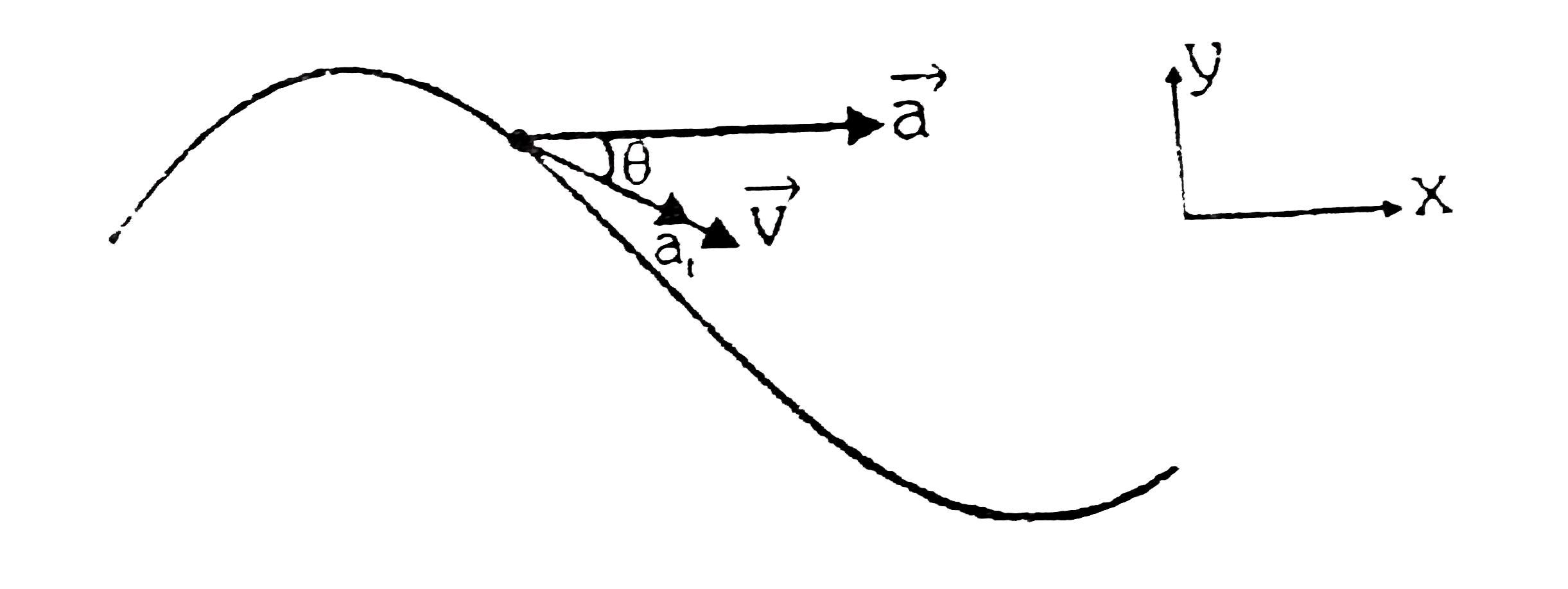Two particles of equal masses have velocities →v1=4ˆims−1 and →v2=4ˆjms−1. First particle has an acceleration →a1=(5ˆi+5ˆj)ms−2, while the acceleration of the other particle is zero. The centre of mass of the two particles moves in a path of
Straight line
Parabola
Circle
Ellipse
The correct Answer is:A
Step by step video & image solution for Two particles of equal masses have velocities vec v_1 = 4hati ms^(-1) and vec v_2 = 4hatj ms^(-1). First particle has an acceleration vec a_1 = (5 hat i + 5 hat j) ms^(-2), while the acceleration of the other particle is zero. The centre of mass of the two particles moves in a path of by Physics experts to help you in doubts & scoring excellent marks in Class 12 exams.
Updated on:21/07/2023Topper's Solved these Questions
Similar Questions
A particle starts moving with velocity "vecV=hat i(m/s)", and acceleration "vec a=(hat i+hat j)(m/s^(2))".Find the radius of curvature of the particle at "t=1sec".
View SolutionA particle moves with a tangential acceleration at=→a.ˆv where →a=(5ˆi)m/s2. If the speed of the particle is zero at x=0, then find v (in m/s) at x=4.9m.

View Solution
Knowledge Check
Two particles of equal masses have velocities →v1=4ˆi and →v2=4ˆj. First particle has an acceleration →a1=(5ˆi+5ˆj)ms−2 while the acceleration of the other particle is zero. The centre of mass of the two particles moves in a path of
Astraight lineBparabolaCcircleDellipseTwo particles of equal mass have velocities →v1=2ˆi=m/s−1 and →v2=2ˆjm/s−1. First particle has an acceleration →a1=(3ˆi+3ˆj)ms−2 while the acceleration of the other particle is zero. The centre of mass of the two particles moves in a path of.
Astraight lineBparabolaCcircleDellipseTwo particles of equal masses have velocities →v1=8ˆi and →v2=8ˆj. First particle has an acceleration →a1=(5ˆi+5ˆj)ms−2 while the acceleration of the other particle is zero. The centre of mass of the two particles moves is a path of
Astraight lineBparabolaCcircleDellipse
Two particles of equal mass have velocities 2ˆims−1 and 2ˆjms−1. First particle has an acceleration (ˆi+ˆj)ms−2 while the acceleration of the second particle is zero. The centre of mass of the two particles moves in ?
View SolutionTwo particles of equal mass have velocities and . First particle has an acceleration while the acceleration of the other particle is zero. The centre of mass of the two particles moves in a path of
View SolutionTwo particles of equal masses have velocities →v1=4ˆiand→v2=4ˆj . First particle hac an acceleration of the other particle is zero . The centre of mass of the two particles moves in a path of
View SolutionThe velocities of two particles AandB of same mass are →VA=aˆi and →VB=bˆj where a and b are constants. The acceleration of particle A is (2aˆi+4bˆj) and acceleration of particle B is (aˆi−4bˆj) in (m/s2). The centre of mass of two particle will move in :
View SolutionA particle's velocity changes from (2ˆI+3ˆj)ms−1 in to (3ˆi−2ˆj)ms−1 in 2s. Its average acceleration in ms−2 is
View Solution
